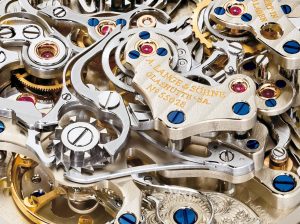
CRASA Forum on Postal Financial Services
July 15, 2016
DAP awarded broadband project in Brazil
July 16, 2016Is the IoT Thing Around the Corner?

 Talk of the Internet of Things (IoT) is everywhere these days. It will be “the next Industrial Revolution”, says The Huffington Post. “IoT devices are expected to exceed mobile phones as the largest category of connected devices in 2018”, says Forbes. Samsung Electronics announced a few days ago that it plans to invest $1.2 billion over 4 years into U.S.-based IoT R&D.
Talk of the Internet of Things (IoT) is everywhere these days. It will be “the next Industrial Revolution”, says The Huffington Post. “IoT devices are expected to exceed mobile phones as the largest category of connected devices in 2018”, says Forbes. Samsung Electronics announced a few days ago that it plans to invest $1.2 billion over 4 years into U.S.-based IoT R&D.
The main idea behind IoT is to let sensors capture data that is then collected and transformed into useful information. Smart phones have led the development of small and affordable sensors, including accelerometers, gyroscopes, magnetometers, barometers, proximity, light sensor, touch screens, GPS, WiFi, Bluetooth, GSM/CDMA, NFC, and cameras. Promising IoT fields include industrial automation, smart homes, smart cities and healthcare. My bet is on healthcare where IoT can help improve reliability and patient outcomes.
But successfully implementing IoT means a lot more than hooking up sensors together! A clear data management strategy is the first step. Data volumes and evolving data schema are key challenges. Security will be next. Platforms to help manage data, devices and events, however, are slowly coming on line. To really add value, IoT projects must analyze the captured data and lead to actions. Our smart phones are able to tell us how many steps we have walked in a day. Most know how to measure our pulse too. But that is not enough to improve healthcare reliability and patient outcomes.
There are essentially two ways that data from IoT sensors can be used to create value:
- Data is collected and analyzed after the fact to identify patterns and improve processes, or
- Data is processed in real time to take decisions and manage things as they happen.
Both of these approaches require the development of logic to transform sensor data into actionable information. Eventually, we will see IoT analytics embedded into sensors communicating with other sensors. But in the meantime, the hard work of developing, testing and validating these analytic engines are still squarely ahead of us.


